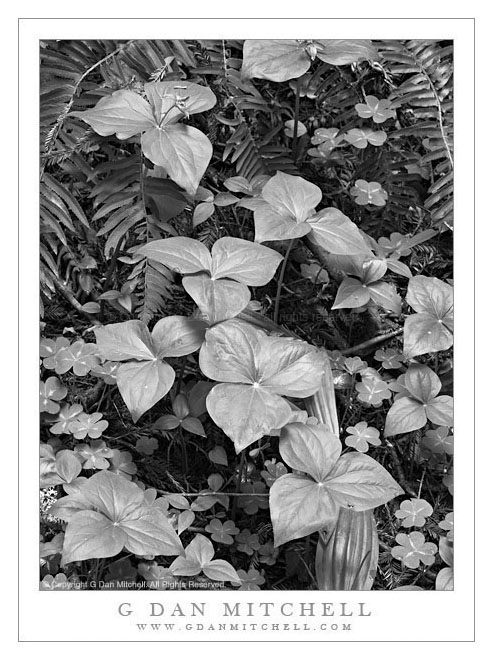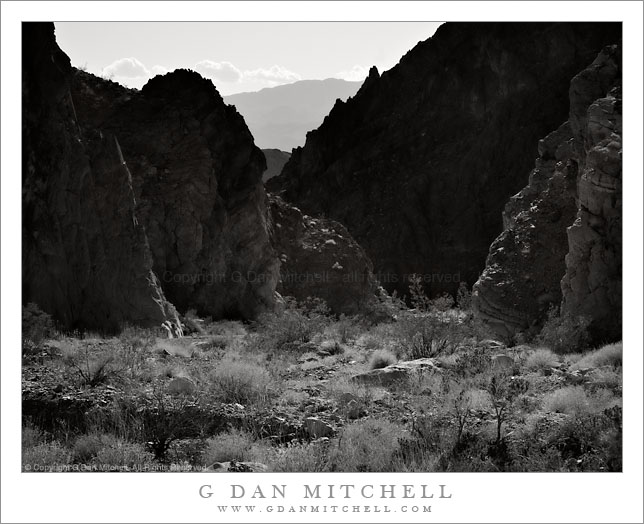Trillium Plants, Redwood Forest. Muir Woods National Monument, California. March 21, 2009. © Copyright 2009 G Dan Mitchell – all rights reserved.
Trillium plants beneath the redwood forest canopy at Muir Woods National Monument.
This is another of the previously overlooked photographs from a few years back, this time from Muir Woods National Monument in the Golden Gate National Recreation Area. I visit there frequently, and on this occasion I arrived just after the bloom of the trillium flowers had finished, but when the plants were still growing strong.
G Dan Mitchell is a California photographer whose subjects include the Pacific coast, redwood forests, central California oak/grasslands, the Sierra Nevada, California deserts, urban landscapes, night photography, and more.
Blog | About | Flickr | Twitter | Facebook | Google+ | 500px.com | LinkedIn | Email
Text, photographs, and other media are © Copyright G Dan Mitchell (or others when indicated) and are not in the public domain and may not be used on websites, blogs, or in other media without advance permission from G Dan Mitchell.



